 High friction surface treatments (HFST) can drastically reduce crashes on roadway segments with friction-demand issues, such as interchange ramps and sharp horizontal curves, by increasing skid resistance.
A new video demonstrates the first known application of a HFST on a Minnesota county road system. Installed this summer on several curves in St. Louis County, the application will be studied in an upcoming research project that is evaluating an alternative, possibly more cost effective, type of HFST material.
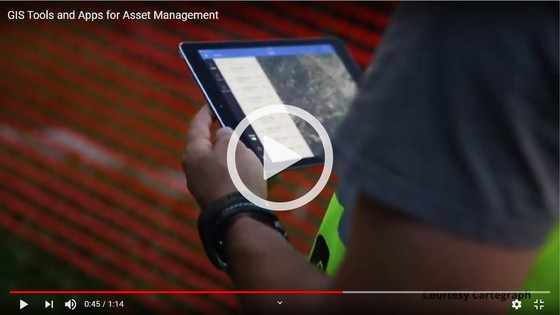 Geographic information system (GIS) applications, tools and geospatial data can provide agencies with the most accurate inventory of assets such as signs, culverts, roads and bridges.
However, challenges such as agency size and location, access to accurate and timely geospatial data, and lack of information about the best data processes, applications and tools limits local agency use.
The LRRB examined current local practices and reviewed existing mobile technologies to recommend best practices for the efficient, cost-effective use of GIS mobile technology for management of agency assets.
A Quick Start Guide highlights five GIS software tools used by Minnesota local agencies and guidance on how to get started using GIS for managing assets.
This short video provides an overview of the guide.
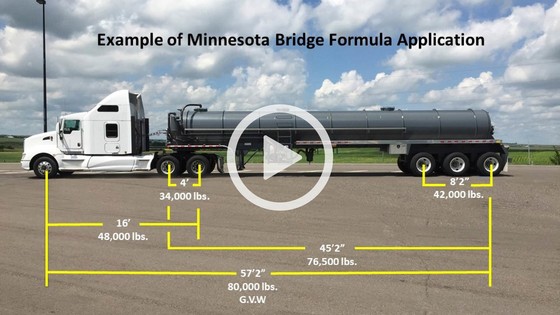 A new video tutorial explains how to use the Minnesota Truck Weight Calculator, which provides a convenient way to determine the maximum legal weight that any set of axles on a vehicle/vehicle combination may carry on Minnesota highways.
The allowable weight on a vehicle/vehicle combination may increase by either adding additional axles or by increasing the distance between axles. The formula for the calculator is a weight-to-length ratio.
Currently, the calculator provides you with information based on legal weight. Future calculator development will include restricted weights and also weights allowed during seasonal increases.
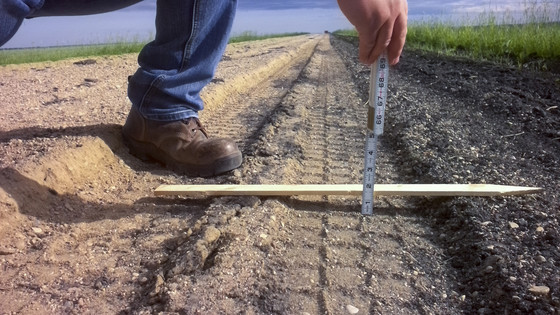 Kittson County has many miles of dirt roads serving its extensive cropland. But high levels of soil salinity create a naturally weak subgrade, so these roads tend to become impassible with severe rutting after a summer rain or when exposed to heavy loads from trucks hauling crops and supplies.
Kittson County Highway Department received a $15,000 grant through the Local OPERA Program to develop a lowcost way to strengthen these dirt roads or at least make them more accessible by adding sandy aggregate (Class 3) with the dirt. An area railroad provided excess piles of this sandy aggregate for the project.
Learn how to design culverts that accommodate fish passage and maintain stream connectivity in a workshop offered by Minnesota LTAP. The training is based on a new Minnesota guidebook (pdf) and recent research.
The workshop has a four-hour self-paced learning component, available over two weeks, followed by an instructor-led interactive online session. Six workshop sessions are offered. Limited spots are available, so register early!
Researchers analyzed Minnesota public fleet vehicle performance data to help local agencies determine the benefits of using hybrid and conventionally powered vehicles.
For urban stop-and-go uses, hybrid powertrains offered significant benefit, with 20% to 25% improvement in fuel consumption. However, for rural and highway routes, hybrids provided only modest benefit—about a 5% improvement in fuel consumption.
Overall, plug-in hybrids offer the greatest fuel economy benefits. Hybrid use in winter produced improved cold weather fuel economy, possibly due to lower driving speeds and regenerative braking technologies.
Visit the project page to learn more.
Stop lines are relatively inexpensive, and citizens frequently request them at intersections with frequent stopping violations. However, local agencies may have hundreds of such intersections, and at approximately $1,000 for annual maintenance, stop line upkeep can become a sizable expense.
The LRRB investigated whether stop lines provide a quantifiable safety benefit. Two comprehensive studies concluded that installing stop lines doesn’t directly correlate to improved traffic safety. The study concluded that traffic engineers may want to reconsider where to invest the dollars they currently spend on stop lines and their maintenance.
Visit the project page to learn more.
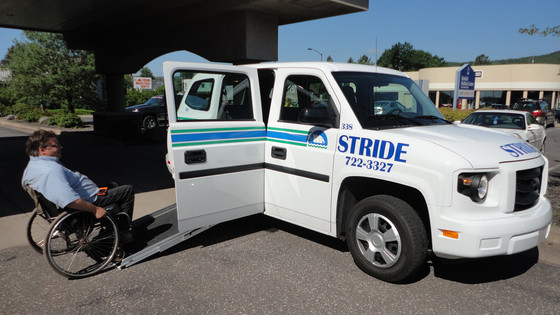 The benefits of Minnesota’s rural and small urban transit systems exceed the costs of services, according to a study sponsored by the Minnesota Department of Transportation.
For every dollar spent to provide transit services in Greater Minnesota, benefits worth $2.51 are shared throughout the communities, according to the “Measuring the Economic Benefits of Rural and Small Urban Transit Services in Greater Minnesota” report.
Visit the project page to learn more.
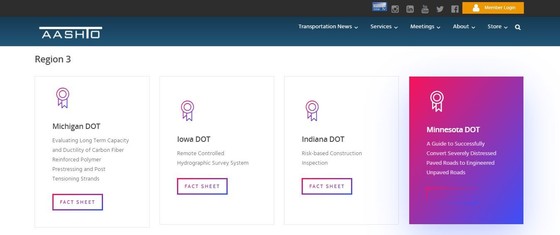 The LRRB's "Guide to Converting Distressed Low-Volume Paved Roads to Unpaved Roads" project won a 2020 AASTHO Sweet Sixteen Award!
- Each year, the AASHTO Research Advisory Committee (RAC) asks states to identify and document recently completed “high-value” research projects as a resource to other agencies and to reduce duplication of research.
Visit AASTHO for a complete list of award winners.
Have you ever dreamed that all of your tinkering, fussing, and fiddling in the shop and on the road could help improve every road in Minnesota? Do you have ideas for improving tools or processes related to work-zone safety, vegetation management, or sign maintenance? Or maybe you've been finding solutions for COVID-related impacts to your job that could benefit other transportation practitioners across the state.
Whatever it is, the Local Operational Research Assistance (OPERA) Program wants to hear about it!
Funding for OPERA projects is available, and it's easy to submit a proposal. Simply fill out the brief proposal application (DOCX) and submit it via email to Mindy Carlson at Minnesota LTAP. Although there is no deadline to submit your proposal, funding is limited, so early submissions are encouraged.
Visit Minnesota LTAP for more information.
We're on LinkedIn! Follow our Local Road Research Board page for updates on research projects, new resources, and to connect with other local transportation practitioners.
|